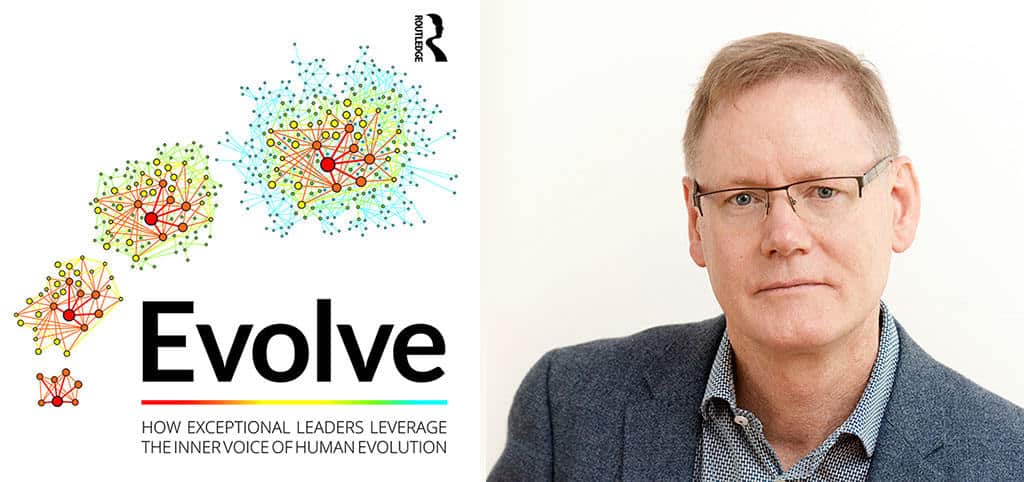Four Prehistoric Leadership Capabilities for Today’s CEO

Anthropology might not be a subject that you find on a typical CEO’s ‘to-do’ list. Would this change if our CEO could see how their effective leadership techniques have directly evolved from leaders in the past? What else can their predecessors teach them about being a better leader?
The study of society through pre-history is a study of the evolution of leadership. The leader-follower traits that led to larger and more co-operative groups were rewarded over time through natural selection. Larger, more cooperative groups outcompeted those groups that cooperated less well. And cooperation is always facilitated by leadership.
The leadership capabilities that led to breakthroughs in societal cooperation in the distant past are still alive and well in the successful CEO today. This is not just an academic curiosity. A knowledge of the major leadership modes given to us by human evolution should be the foundation for leadership development and even transformation.
The topic of evolutionary leadership has not been served well by some previous works, which would have us believe that we are just better-dressed versions of cave-men or wandering tribes on the ancient Savanna. Even the most cursory study of modern human behaviour can dismiss this assertion – we are much more complex. We have extraordinary cognitive abilities that our ancient forebears did not, and we put these to use in incredibly nuanced ways. But beneath all of this, some basic building blocks have endured.
Perhaps the most remarkable thing about the study of human cooperation through prehistory is that the development of leadership capability is non-linear. Instead of a continual, gradual increase in leadership impact, we find step changes. Anatomically modern homo sapiens appeared around 200,000 years ago. For the next 150,000 years, the basic modes of leadership and cooperation stayed constant. Then, around 50,000 years ago – in a period known as the cognitive revolution – two major step changes occurred. The size of cooperative groups suddenly grew from tens to hundreds, and then from hundreds to thousands.
The mechanisms of leadership that facilitated these step changes are with us today. Potential followers still carry the hardwiring of their ancient predecessors and look for specific things from their leader at specific times. Exceptional leaders not only have mastery of all of the leadership modes but develop the instinct to apply the right mechanism at the right time.
So, what are these modes of leadership that every CEO should be aware of?
There are four modes, best described as “Outer Voices”.
- Heartfelt Voice is the foundation of the leadership modes and, from an evolutionary point of view, the oldest. Heartfelt voice is a leader’s capability to create an inner circle of trusted allies. When using their heartfelt voice, a leader creates psychological safety. They create an environment where people feel safe to say what they think, to discuss difficult issues and find joy in each other’s successes. The heartfelt voice builds deep relationships and shared purpose at a personal level.
- Command Voice complements the heartfelt voice. Command voice is the leader’s capability to get things done and to deliver reliable outcomes to assigned tasks. A leader with a strong command voice needs to ask only once to get the required outcome. They speak and get action. They get people’s commitment to deliver and turn ambiguity into action. Organizations led by a strong command voice are strong on planning and then delivering that plan. They have strong operations and are disciplined in the way they execute.
- The next major mode of leadership is the Prosocial Voice, which is a more advanced outer voice than heartfelt and command voice. Today, the prosocial voice is a leader’s capability to create a positive social environment and sense of community behind business objectives. It creates an environment where formal and informal communication channels transmit positive messages; where successes are celebrated and shared; where teams interact positively with other teams. The prosocial voice is a much more egalitarian form of leadership than the heartfelt voice or the command voice. Because of that, a leader using prosocial voice can operate at a greater distance from their followers. In organizations led with a strong prosocial voice, a leader’s intent emerges informally and in widely varying contexts. It can be measured by what people say to each other when the boss is not listening.
- Futurizing Voice represents the final breakthrough in the impact of leadership during the cognitive revolution. It marked the emergence of the storytelling that we now associate so strongly with leadership. The futurizing voice is the ability of a leader to build a verbal picture of a future that people buy in to and then act to make happen. It is the voice of movements that start small, then grow into a groundswell of activity. Importantly in the modern context, the futurizing voice operates in complex adaptive social systems. Whole communities are moved to change and to take coordinated action in the service of big goals.
Collectively, these four voices become the Differential Voice model of leadership. The model contends that highly effective leaders are proficient at all four of the outer voices and understand when to use them. They are as effective today as they were for our ancestors.
Maybe there is an argument for at least one specific aspect of anthropology to make it onto our CEOs ‘to-do’ list!

Have you read?
# World’s Best Countries To Invest In Or Do Business.
# Most Expensive Countries In The World To Live In, 2019.
# Global Passport Ranking, 2019.
# The World’s Safest Cities Ranking.
# Most Startup Friendly Countries In The World.
Add CEOWORLD magazine to your Google News feed.
Follow CEOWORLD magazine headlines on: Google News, LinkedIn, Twitter, and Facebook.
This report/news/ranking/statistics has been prepared only for general guidance on matters of interest and does not constitute professional advice. You should not act upon the information contained in this publication without obtaining specific professional advice. No representation or warranty (express or implied) is given as to the accuracy or completeness of the information contained in this publication, and, to the extent permitted by law, CEOWORLD magazine does not accept or assume any liability, responsibility or duty of care for any consequences of you or anyone else acting, or refraining to act, in reliance on the information contained in this publication or for any decision based on it.
Copyright 2024 The CEOWORLD magazine. All rights reserved. This material (and any extract from it) must not be copied, redistributed or placed on any website, without CEOWORLD magazine' prior written consent. For media queries, please contact: info@ceoworld.biz
SUBSCRIBE NEWSLETTER








